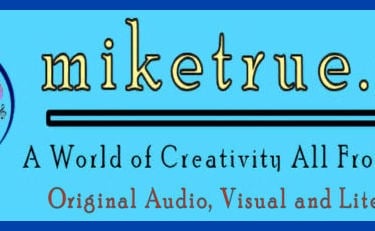" Songwriting 101"
Background Information - Music
Michael S. True
9/20/20243 min read


9/20/2024
Background Information – Music
"Songwriting 101"
Many of us struggle to compose a “hit song”, in a time where AI and the plethora of existing music appears overwhelming. Choosing to create something fresh and original can often feel impossible to achieve. And yet people around the world are doing it every day!
In this post, I am focusing on songwriting. How do you get started? How do you get past the inevitable period of “writer’s block”? Even if you have written one or more solid songs already, reviewing this information will broaden your horizons and perhaps open up new ways to express your musical self. In order to jumpstart this process, I have found many on-line resources, some of which I will share with you now.
Every songwriter should take some time to learn about the variety of song styles, about song structure and basic arrangements and have a list of the ideas that he or she wants to write about in future songs. Below, Are some suggested Internet “searches”. Without getting caught up in any of the associated advertising, get into the content of some of these websites. Many are very informative.
Styles
Search “List of music genres and styles”
Wikipedia pops up on top for some of the most in-depth annotations of dozens of old and new music styles. As you explore individual styles, this amazing resource features a separate description and history of each of the genres. You will read about the various composer/performers that will further point you in the direction of specific songs that represent the chosen style. If you dig deeper there is also a listing of the instrumentation often associated with each style, as well.
Song structure and arrangements
Search “Song structure, Arrangements”
This search list included a variety of websites that outline the basics of songwriting formulas. Key elements such as Intro, Verse, Chorus, Bridge, and Outro are defined. The songwriter must delve into the style of music they have chosen in order to understand the traditional arrangements of each of these elements. Depending on the genre, many newer songs try to shake up or reconfigure these arrangements. You can either choose to stick with the tried and true or experiment with changes in the overall arrangement, tempo or instrumentation, to find your own unique composition.
Content/ideas
Search “ideas for new songs”
In doing so, a series of websites are listed that provide unique views as to specific or generalized song starters. These are a good source to pick through to decide on where your interests and inclinations lie. Some of these lists are quite extensive and provide hundreds of possibilities.
Overall, studying these websites gives anyone a fuller toolkit, when it comes to making the better song. Personally, I also spend some time listening to a variety of radio/on-line music, to find out both what is popular these days and how the artist is showcasing the tune. I have also been known to listen to older musical recordings to find themes that have withstood the test of time.
The trick of writing current popular music, is just a matter of hearing what is out there already and finding new ways to make it fresh. This includes using words and phrases that have become popular, including slang. Arrangements and instrumentation also play a key role.
In this process, it is good to remind yourself that most “radio ready” music must be between three and a half to five minutes in length. There are many songs that are longer but these are usually album cuts that are sandwiched between several shorter songs. Having said that, a good rule of thumb is the tolerance of your audience. I have written some longer songs and then performed them before a live group of fans. If your fans want the jam to go on and on, as in a dance tune, then let it be, if it is too long or too “busy” your audience may become restless and disconnect. I seldom record a song until I get a feel for the audience’s reaction to it and edit accordingly.
I hope this gives you some ideas for honing your craft and getting past the notorious “writer’s block”..
Follow your dreams – Make More Art! M.True